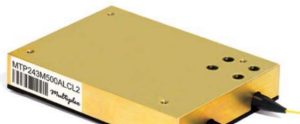What Are S and L Feeds in Antenna Technology?
In the realm of antenna technology, the use of multiple frequency bands such as S and L bands in a single system enhances functionality and broadens application areas. S and L feeds are crucial components that enable antennas to receive and transmit signals over these specific frequency ranges. Understanding the characteristics and uses of S and L feeds is essential for professionals involved in communications, radar systems, and satellite technology.

Understanding S and L Bands
Before delving into the feeds themselves, it is important to understand what S and L bands represent in the electromagnetic spectrum.
S-Band Characteristics:
- Frequency Range: Typically spans from 2 to 4 GHz.
- Applications: Widely used in weather radar, surface ship radar, and some communications satellites.
- Advantages: Offers a balance between range and resolution, capable of penetrating moderate rain.
L-Band Characteristics:
- Frequency Range: Generally covers from 1 to 2 GHz.
- Applications: Primarily used for mobile satellite communications, GPS, and aircraft surveillance.
- Benefits: Known for longer wavelengths which provide better penetration through foliage and are less affected by weather.
Functionality of S and L Feeds
S and L feeds are the interface components in antenna systems that facilitate the reception and transmission of electromagnetic waves in their respective bands. These feeds are designed to match the antenna’s input impedance to the transmission line’s impedance, ensuring efficient power transfer and minimal signal loss.
Key Features of S and L Feeds:
- Dual-Band Capability: Many modern systems combine S and L feeds to handle both frequencies efficiently, using either separate feed systems or integrated dual-band solutions.
- Design Considerations: The design of these feeds must account for factors such as feed impedance, bandwidth requirements, and polarization to optimize performance.
Applications in Technology
Combining S and L feeds in antenna systems allows for versatile applications across various high-demand fields.
Enhanced Communication Systems:
- Satellite Communication: Utilizes both S and L band feeds to manage different types of data transmission, ensuring robust global communication links.
- Mobile and Maritime Communications: L band’s longer wavelengths are ideal for communication in environments where signal attenuation due to obstacles is a concern.
Advanced Radar and Navigation Systems:
- Aircraft Surveillance: L band feeds are crucial in air traffic control radar to monitor and communicate with aircraft over extensive distances.
- Weather and Environmental Monitoring: S band feeds play a pivotal role in meteorological radars, providing critical data for weather prediction and analysis.
Technological Innovations
The development of S and L band feeds continues to evolve, driven by the need for more efficient, reliable, and compact components in antenna systems.
Innovations Include:
- Integrated Feeds: Development of feeds that can efficiently switch between S and L bands without compromising performance, saving space and reducing complexity.
- Material Advances: Use of novel materials and manufacturing techniques to enhance the durability and performance of feeds, especially in harsh environmental conditions.
Conclusion
The S and L feeds in antenna technology are foundational for ensuring effective communication and accurate data transmission across multiple frequency bands. By enabling precise control over signal reception and emission in both S and L bands, these feeds facilitate a wide array of applications from global communications to critical weather forecasting. As technology progresses, the role of these specialized feeds will only become more integral, driving further advancements in the field of antenna and satellite technology.